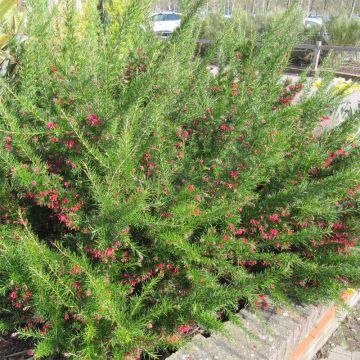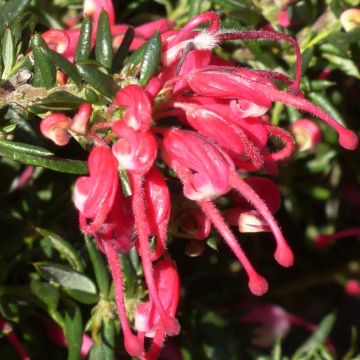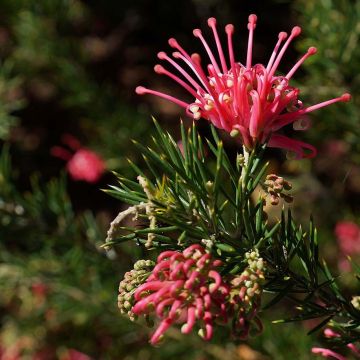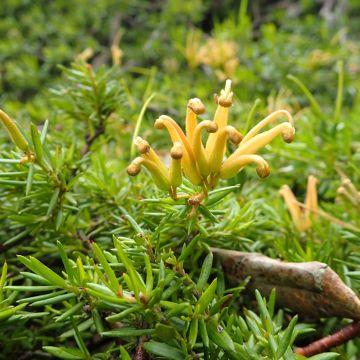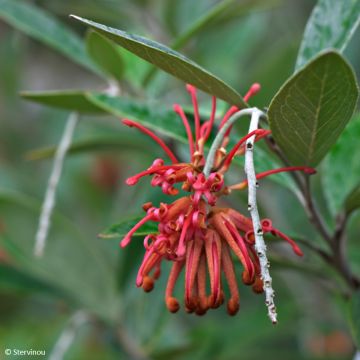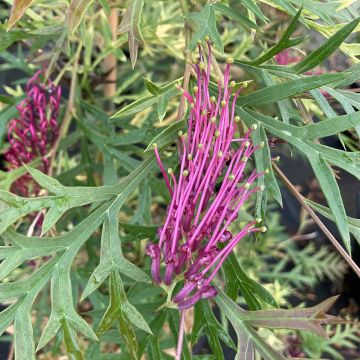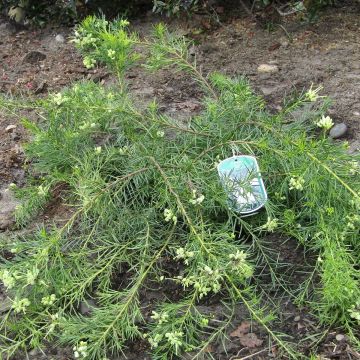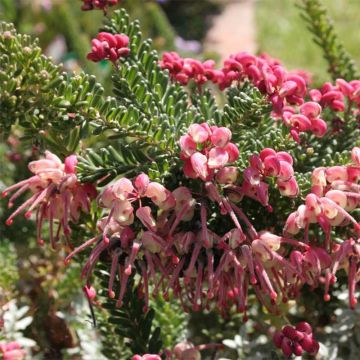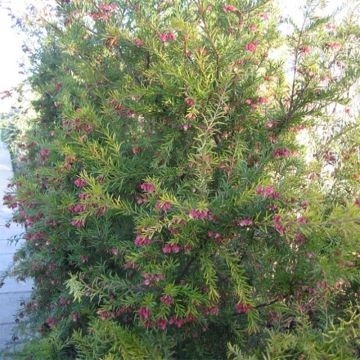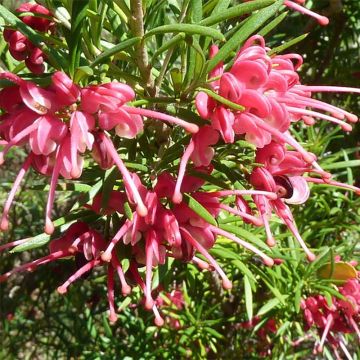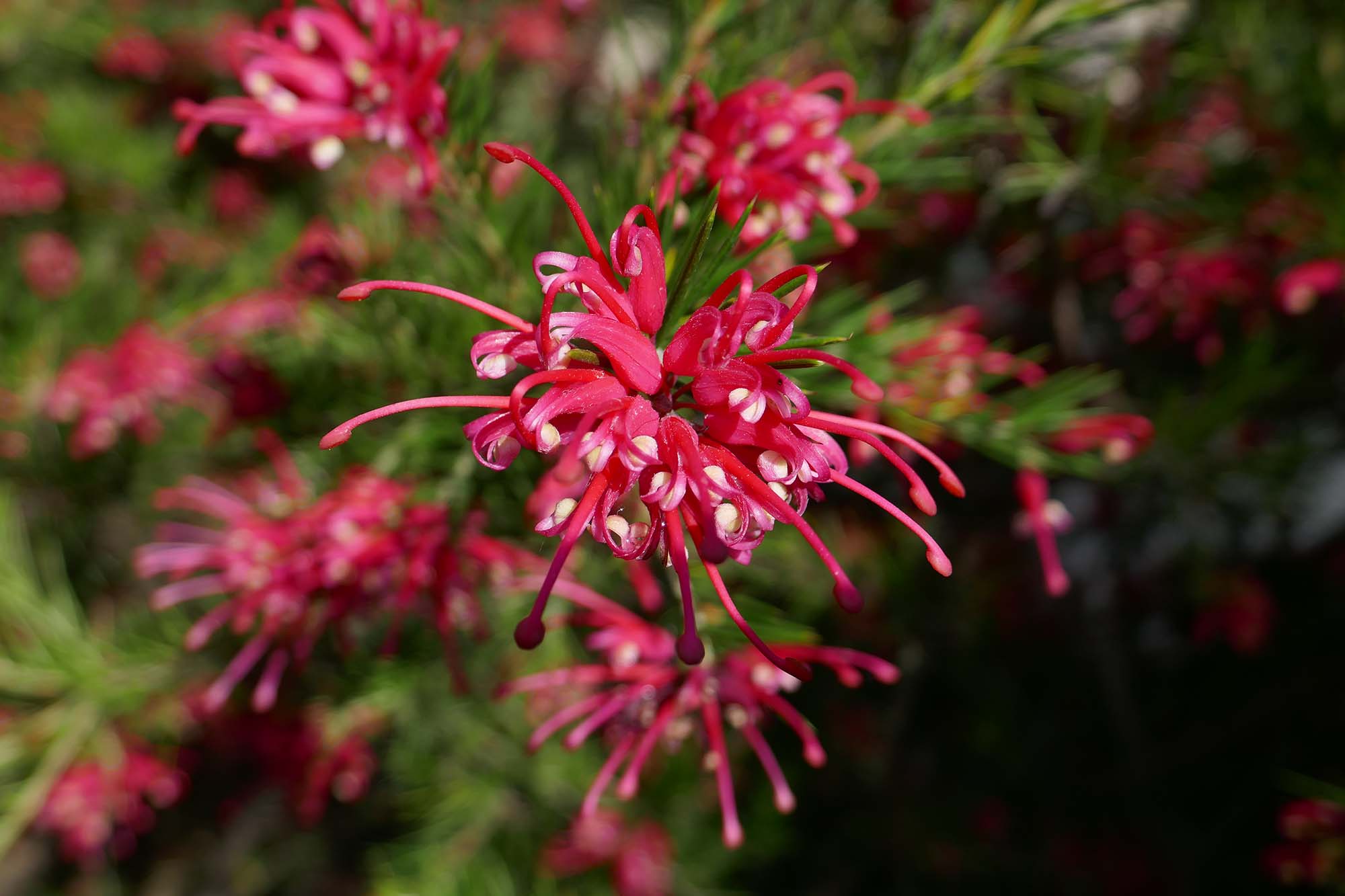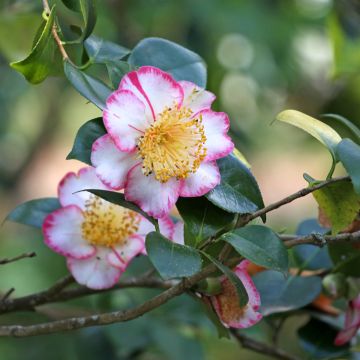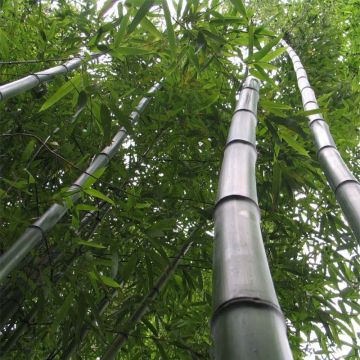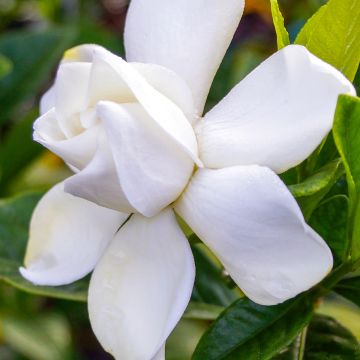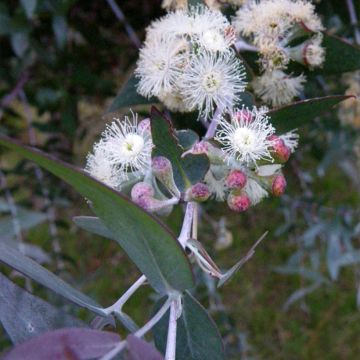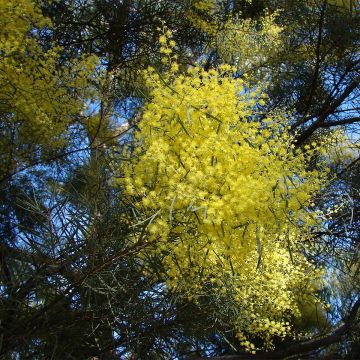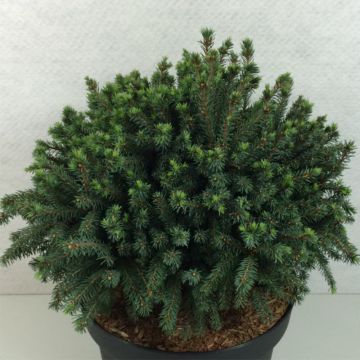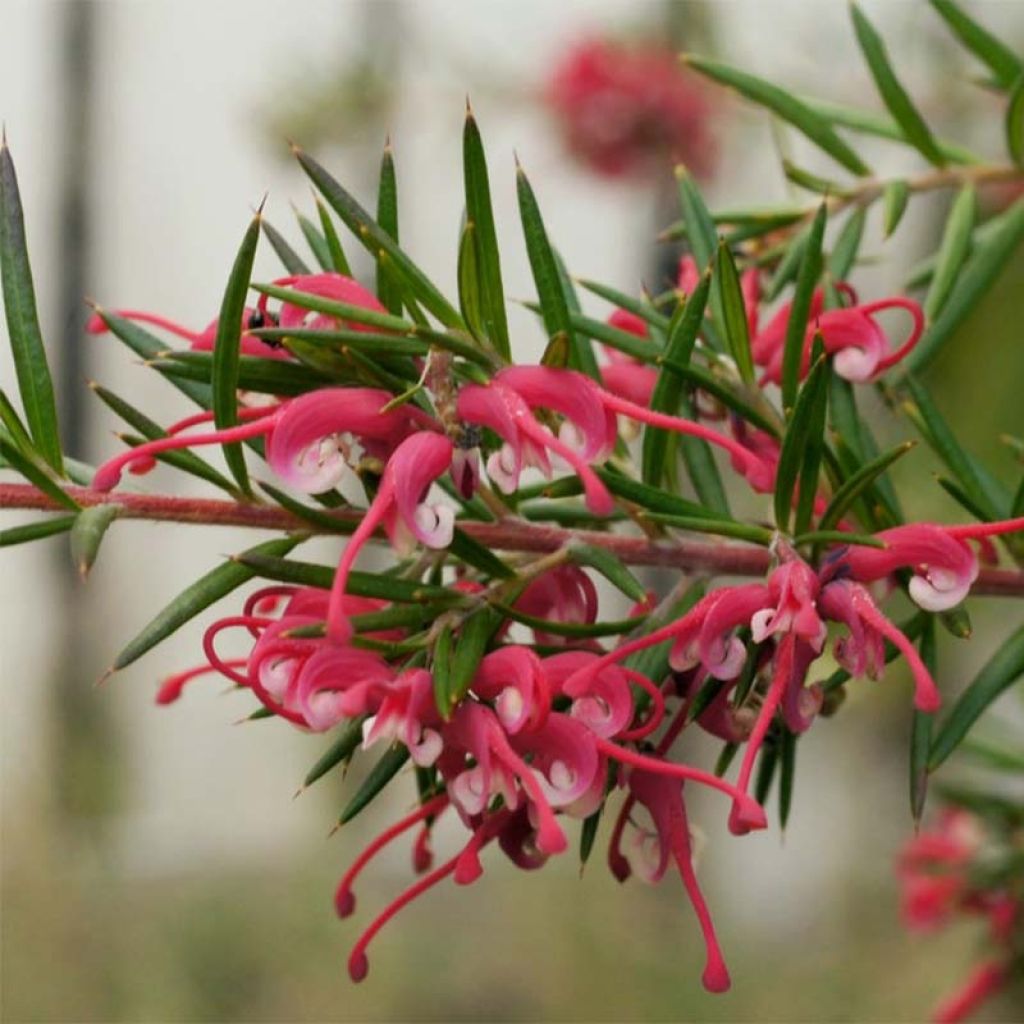

Grevillea gracilis Clearview David
Grevillea gracilis Clearview David
Grevillea gracilis Clearview David
Spider Flower
Special offer!
Receive a €20 voucher for any order over €90 (excluding delivery costs, credit notes, and plastic-free options)!
1- Add your favorite plants to your cart.
2- Once you have reached €90, confirm your order (you can even choose the delivery date!).
3- As soon as your order is shipped, you will receive an email containing your voucher code, valid for 3 months (90 days).
Your voucher is unique and can only be used once, for any order with a minimum value of €20, excluding delivery costs.
Can be combined with other current offers, non-divisible and non-refundable.
Why not try an alternative variety in stock?
View all →This plant carries a 24 months recovery warranty
More information
We guarantee the quality of our plants for a full growing cycle, and will replace at our expense any plant that fails to recover under normal climatic and planting conditions.

Does this plant fit my garden?
Set up your Plantfit profile →
Description
Grevillea gracilis 'Clearview David' is a vigorous and highly floriferous variety. This bushy shrub bears a small needle-like, dark green, evergreen foliage on its erect branches, reminiscent of rosemary. This bright scarlet cultivar has the particularity of flowering along its branches in a true explosion of colour, sometimes starting as early as February and lasting for months. Resistant to drought and diseases and hardy down to -10°C (14 °F) in well-drained soil, it certainly deserves a place in the garden. A small hole filled with sand and ericaceous soil should be dug for its root.
Grevillea is a shrub belonging to the Proteaceae family, native to the cooler regions of southeastern Australia. Many Grevillea species are pioneers in their natural environment: they tolerate fairly poor dry soils but do not appreciate the presence of limestone, and require full sun to bloom. The Grevillea gracilis 'Clearview David' was selected by William Cane in 1976 and is believed to be the result of cross-breeding between Grevillea rosmarinifolia and Grevillea lavandulacea. It grows rapidly, reaching its adult size in 3-4 years, and has a rounded habit, averaging 1.50 m (4 ft 11 in) in all directions. It develops fine ascending branches, forming a dense and slightly bushy mass. Its small narrow and pointed leaves do not exceed 1.5 to 3 cm (0.6 to 1.2 in) in length and 3 mm (0.1 in) in width. They are prickly, hairy underneath, and dark green. The highly decorative floral buds form from late autumn. The flowering truly "explodes" from February and continues until May-June, without interruption. It can bloom throughout the year in mild climates if the soil remains slightly moist in summer. The raspberry-red flowers with pale yellow backs are composed of petaloid styles curled on themselves and long curved stamens. They are grouped in upright spider-like clusters. The root system of this plant is very dense near the surface, which is an adaptation to nutrient-poor soils and summer drought.
Grevillea gracilis 'Clearview David' is moderately hardy, withstanding down to -10°C (14 °F) in well-drained soil once well established. This shrub requires little maintenance and tolerates light pruning, which will help keep it dense. It will easily thrive in coastal gardens, preferably in light, filtering, and slightly acidic soil. Particularly suitable for Mediterranean climates, it will create dense and flowering hedges with evergreen Ceanothus for a very long period. It will also look good when planted in isolation on large slopes or at the back of dry garden beds, but always in an open position, in full sun. In an exotic or Mediterranean garden, it can be associated with proteas, Agave, Canary Island viper's bugloss, Euphorbia mellifera, Aloe aristata, Melianthus major, palm trees, Callistemon, and Leptospermum. Growing it in a container allows for control over the composition of the substrate and wintering the shrub in a cold greenhouse or a very bright and minimally heated conservatory in very cold regions.
Grevillea gracilis Clearview David in pictures
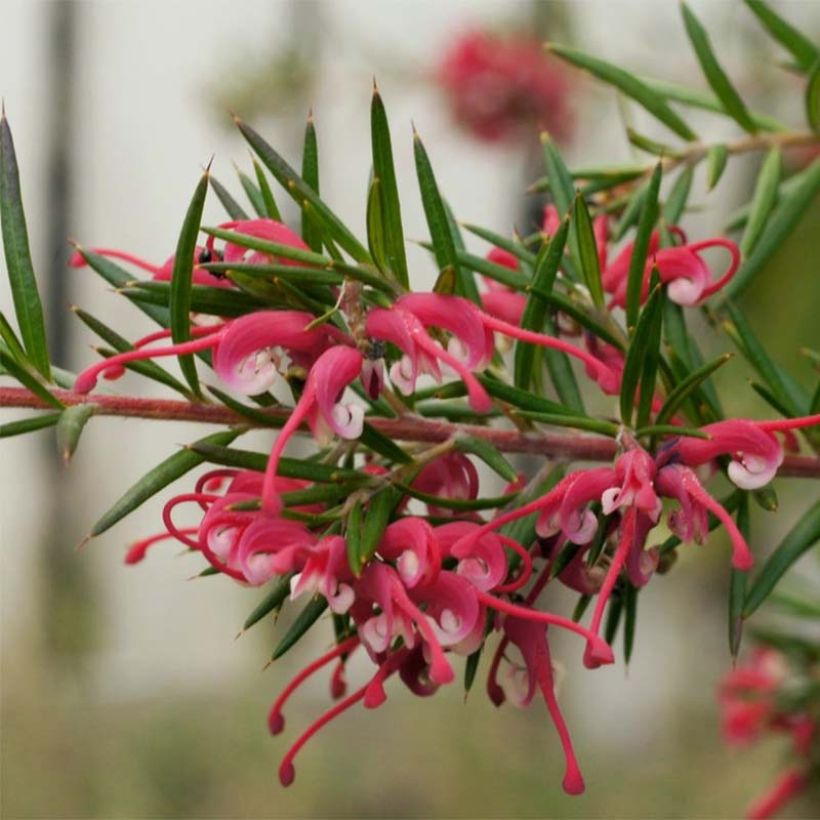

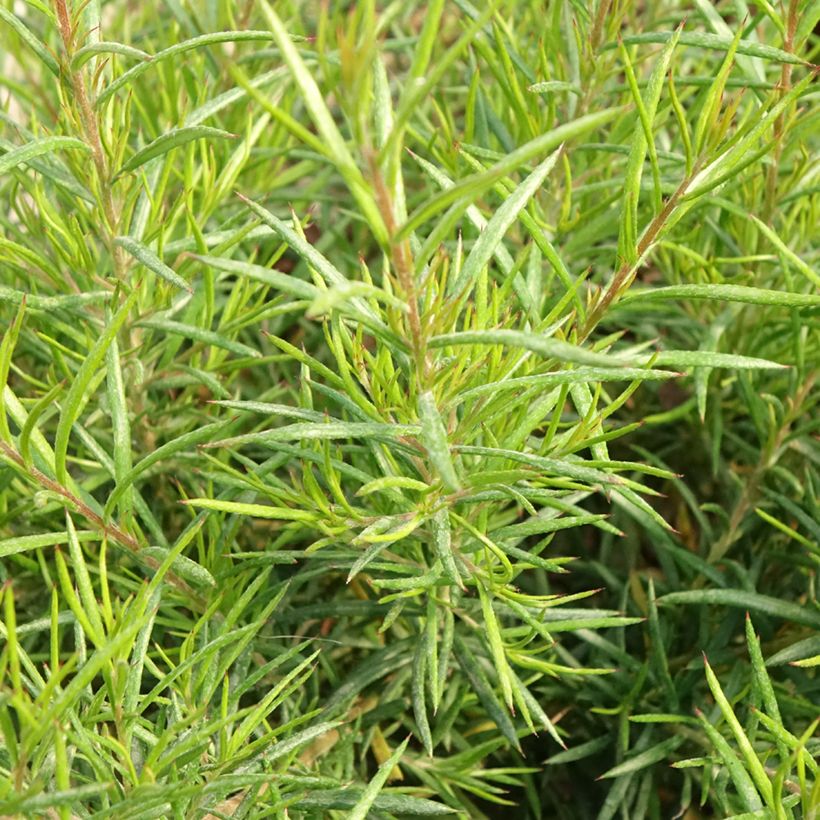

Plant habit
Flowering
Foliage
Botanical data
Grevillea
gracilis
Clearview David
Proteaceae
Spider Flower
Cultivar or hybrid
Planting and care
Cultivation:
Grevillea is best planted in spring, after the last frosts. It prefers soil with an acidic to neutral pH, sandy, clayey, loamy or poor and very well-drained. The presence of limestone in the soil causes yellowing of the foliage, chlorosis, which weakens the bush until it dies. This condition can be corrected by regular application of iron in its chelated form (sequestrant). In regions where the soil and subsoil are limestone, it is advisable to dig a large hole 60 cm (23.6 in) in all directions, filled with ericaceous soil or compost and non-limestone sand. Growing in pots allows better control of the substrate and allows the plant to be stored frost-free in a borderline hardiness zone (down to -10/-11°C (14/12.2 °F) for a well-established plant).
Grevilleas are drought-resistant plants once well established: monitor watering in summer for the first 2 summers, but watering will become optional or even unnecessary afterwards. In open ground, they appreciate a thick layer of mulch. Use wood chips or lawn clippings. It is recommended to use a fertilizer very low in phosphorus, as it can decrease the plant's resistance to drought by destroying the thick root hairs that develop just below the soil surface. An N-P-K fertilizer with proportions of 18-2-10 is well-suited.
For pots, choose Grevillea species and varieties with low growth. Use a light, well-drained but still moist potting soil. We recommend the following mix: 60% pine bark, 20% coarse river sand, 10% fine river sand, and 10% clay soil for its water retention capacity. The pH should be 7 or lower.
Insects and diseases:
Grevilleas can develop black leaf spots, caused by a rarely fatal fungus: a fungicidal treatment will eliminate it.
They can also succumb to collar rot, a deadly disease, also caused by fungi that develop in moist and warm soil. Avoid burying the plant's collar, which should be exposed to air. Avoid watering too often in hot and dry weather, let the soil dry out between waterings.
Phytophthora (cinnamomi), a disease also caused by a fungus, affects many plants in dry areas. The parasite destroys the roots in excessively rainy winters. The plant can suddenly wither in summer due to lack of water as a result of the destruction of part or all of its roots. It will cause the death of a part of the vegetation, or the entire branch in severe cases. Prevention is crucial, as the disease is almost impossible to eradicate: ensure that the soil drainage is perfect, remove excess water from the saucer placed under the pots, and remove dead or diseased parts.
Pruning:
Grevilleas tolerate annual pruning well, during their growth period or just after flowering. Shorten the branches by one-third of their length. A regularly pruned bush will be more branched and more floriferous.
Propagation: by spring sowing or by taking cuttings with heels in June-July. To improve the germination rate of fresh seeds, they can be immersed in boiling water.
Regarding sowing: Grevilleas are plants linked to fire ecology, so they often produce seeds that need the action of intense and brief heat to break their dormancy.
Planting period
Intended location
Care
Planting & care advice
-
, onOrder confirmed
Reply from on Promesse de fleurs
Similar products
Haven't found what you were looking for?
Hardiness is the lowest winter temperature a plant can endure without suffering serious damage or even dying. However, hardiness is affected by location (a sheltered area, such as a patio), protection (winter cover) and soil type (hardiness is improved by well-drained soil).

Photo Sharing Terms & Conditions
In order to encourage gardeners to interact and share their experiences, Promesse de fleurs offers various media enabling content to be uploaded onto its Site - in particular via the ‘Photo sharing’ module.
The User agrees to refrain from:
- Posting any content that is illegal, prejudicial, insulting, racist, inciteful to hatred, revisionist, contrary to public decency, that infringes on privacy or on the privacy rights of third parties, in particular the publicity rights of persons and goods, intellectual property rights, or the right to privacy.
- Submitting content on behalf of a third party;
- Impersonate the identity of a third party and/or publish any personal information about a third party;
In general, the User undertakes to refrain from any unethical behaviour.
All Content (in particular text, comments, files, images, photos, videos, creative works, etc.), which may be subject to property or intellectual property rights, image or other private rights, shall remain the property of the User, subject to the limited rights granted by the terms of the licence granted by Promesse de fleurs as stated below. Users are at liberty to publish or not to publish such Content on the Site, notably via the ‘Photo Sharing’ facility, and accept that this Content shall be made public and freely accessible, notably on the Internet.
Users further acknowledge, undertake to have ,and guarantee that they hold all necessary rights and permissions to publish such material on the Site, in particular with regard to the legislation in force pertaining to any privacy, property, intellectual property, image, or contractual rights, or rights of any other nature. By publishing such Content on the Site, Users acknowledge accepting full liability as publishers of the Content within the meaning of the law, and grant Promesse de fleurs, free of charge, an inclusive, worldwide licence for the said Content for the entire duration of its publication, including all reproduction, representation, up/downloading, displaying, performing, transmission, and storage rights.
Users also grant permission for their name to be linked to the Content and accept that this link may not always be made available.
By engaging in posting material, Users consent to their Content becoming automatically accessible on the Internet, in particular on other sites and/or blogs and/or web pages of the Promesse de fleurs site, including in particular social pages and the Promesse de fleurs catalogue.
Users may secure the removal of entrusted content free of charge by issuing a simple request via our contact form.
The flowering period indicated on our website applies to countries and regions located in USDA zone 8 (France, the United Kingdom, Ireland, the Netherlands, etc.)
It will vary according to where you live:
- In zones 9 to 10 (Italy, Spain, Greece, etc.), flowering will occur about 2 to 4 weeks earlier.
- In zones 6 to 7 (Germany, Poland, Slovenia, and lower mountainous regions), flowering will be delayed by 2 to 3 weeks.
- In zone 5 (Central Europe, Scandinavia), blooming will be delayed by 3 to 5 weeks.
In temperate climates, pruning of spring-flowering shrubs (forsythia, spireas, etc.) should be done just after flowering.
Pruning of summer-flowering shrubs (Indian Lilac, Perovskia, etc.) can be done in winter or spring.
In cold regions as well as with frost-sensitive plants, avoid pruning too early when severe frosts may still occur.
The planting period indicated on our website applies to countries and regions located in USDA zone 8 (France, United Kingdom, Ireland, Netherlands).
It will vary according to where you live:
- In Mediterranean zones (Marseille, Madrid, Milan, etc.), autumn and winter are the best planting periods.
- In continental zones (Strasbourg, Munich, Vienna, etc.), delay planting by 2 to 3 weeks in spring and bring it forward by 2 to 4 weeks in autumn.
- In mountainous regions (the Alps, Pyrenees, Carpathians, etc.), it is best to plant in late spring (May-June) or late summer (August-September).
The harvesting period indicated on our website applies to countries and regions in USDA zone 8 (France, England, Ireland, the Netherlands).
In colder areas (Scandinavia, Poland, Austria...) fruit and vegetable harvests are likely to be delayed by 3-4 weeks.
In warmer areas (Italy, Spain, Greece, etc.), harvesting will probably take place earlier, depending on weather conditions.
The sowing periods indicated on our website apply to countries and regions within USDA Zone 8 (France, UK, Ireland, Netherlands).
In colder areas (Scandinavia, Poland, Austria...), delay any outdoor sowing by 3-4 weeks, or sow under glass.
In warmer climes (Italy, Spain, Greece, etc.), bring outdoor sowing forward by a few weeks.






























